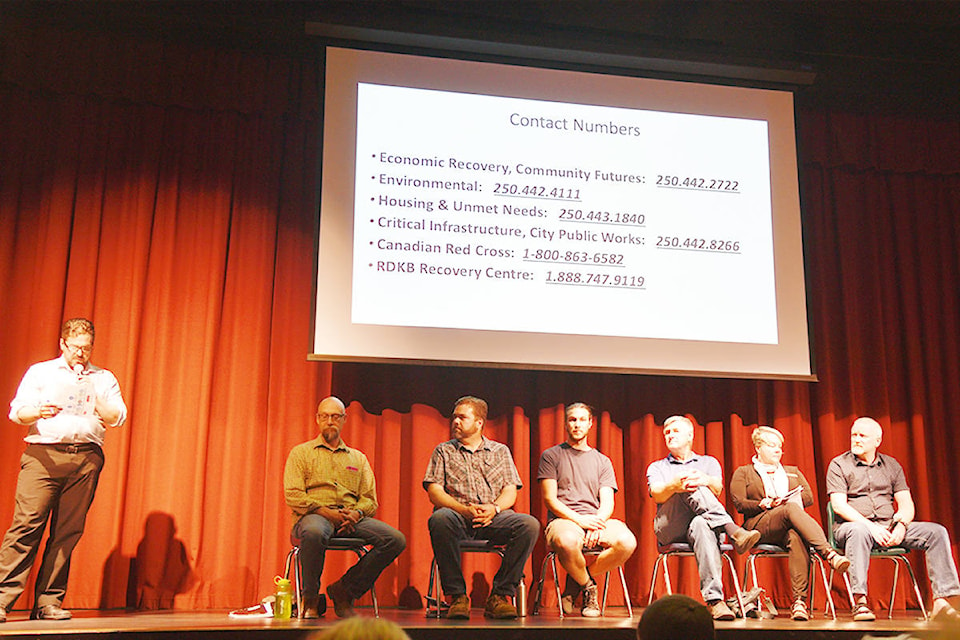Elected officials from both the regional district and the city have started to weigh flood recovery and protection options, but residents wanting the full overview of the river study done post-flood will have to wait awhile longer.
At a flood recovery meeting on Wednesday at Grand Forks Secondary School, an “overview” of the flood solutions being considered was released.
The overview presented four options: full diking protection, return some areas to the natural flood plain, raising homes to the 200 year flood level, and a canal by the airport.
Officials spoke about some of the options in more detail, and noted that both governing bodies (the City of Grand Forks council and the Regional District of Kootenay Boundary) are considering the report, its implications and potential solutions in camera. That means the meetings and discussions around the report are not currently open to the public.
When deciding on the best options for each area, officials said they would be considering public safety, the down- and upstream impacts of any works, as well as “the best decision for the greater good.”
“I am not going to couch this with unicorns and fairies, but there will be some decisions that don’t work for everyone,” said recovery manager Steve Newton at the meeting on Wednesday night. “We don’t know what they are yet, the decisions have not been made yet, but before long they will be made, for some they will work and others they won’t. That is an unfortunate reality.
Newton also spoke about the potential implications of each option and some of the factors elected officials will be considering throughout the process.
“You have two rivers that join … together they had a backup effect. Anything done, you want to protect your property, the decision makers also have to consider those up and down stream impacts. [For example] anything that’s done here in the city may impact homes in the RDKB, so that has to be considered,” Newton said.
Subject experts and other professionals are also being consulted throughout the process, but Newton said it is important for residents to engage with the process and public consultation on flood solutions.
“Whatever we land on ... you won’t just get a knock on the door, there will be outreach and consultations,” he said. “Some of you will hear things that will not benefit you in the way you want, but that will be a reality.”
During the question and answer portion of the meeting, many residents touched on forestry and the impact of clear-cutting specifically on flooding in the area. This sentiment was cheered on by vocal members of the audience.
David Reid, manager of operations with the city, also said that residents will be seeing crews out removing temporary flood protection works done during the flooding while other repairs are being done. Those works were done in haste during the flooding, and correctly engineered repairs will be done when the temporary works are removed.
Curbside pickup of flood related garbage has ended, but Reid said residents can continue to take materials to the landfill without tipping fees for the foreseeable future.
Numbers to Know
The flood recovery team has made the following list of phone numbers available for residents who need information or directions:
Economic Recovery: Community Futures, 250-442-2722
Environmental Concerns: The Kettle River Watershed Authority, 250-442-4111
Housing and Unmet Needs: 250-443-1840
City Public Works: 250-442-8266
Canadian Red Cross: 1-800-863-6582
RDKB Recovery Centre: 1-888-747-9119
